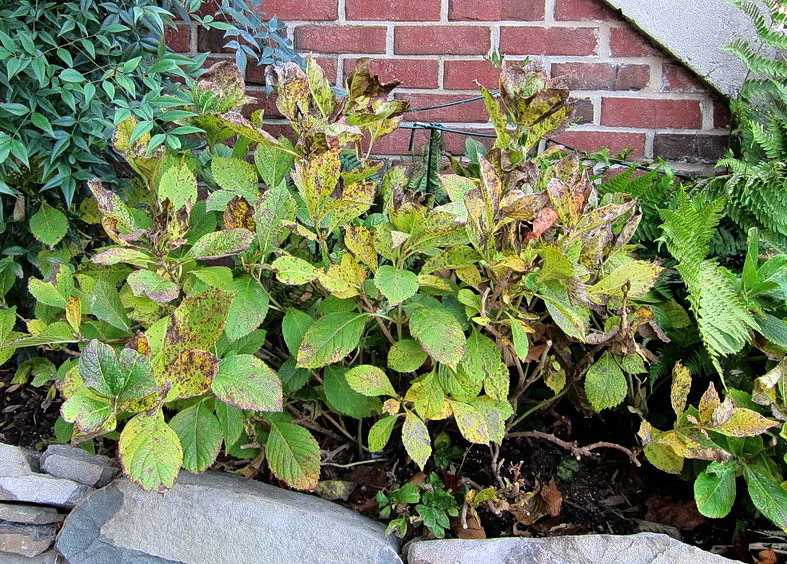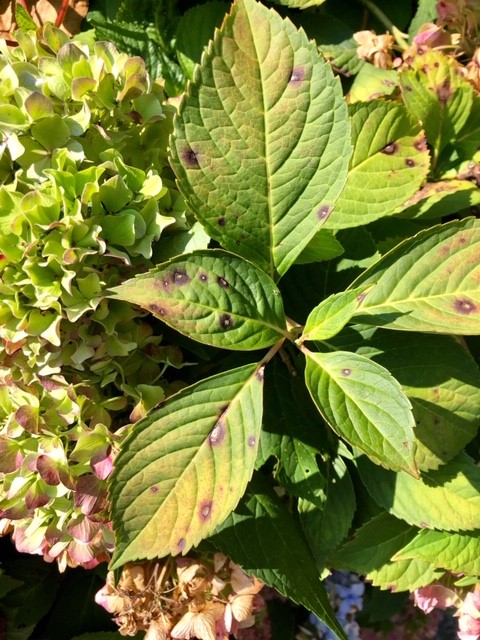The 25-Second Trick For Hydrangea Leaves Turning Yellow
Indicators on Hydrangea Leaves Turning Yellow You Need To Know
Table of ContentsThe Best Guide To Hydrangea Leaves Turning YellowIndicators on Hydrangea Leaves Turning Yellow You Should KnowNot known Incorrect Statements About Hydrangea Leaves Turning Yellow The Definitive Guide for Hydrangea Leaves Turning YellowWhat Does Hydrangea Leaves Turning Yellow Mean?Excitement About Hydrangea Leaves Turning Yellow
Large fallen leaves typically look droopy during the afternoon heat. When they fail to perk up in the evening or still look wilted in the morning, your plant could be overwatered.Eliminate the plant from the soil and prune out any origins that aren't white and swollen (plump) (Hydrangea Leaves Turning Yellow). Replant in a new location or function some sand into the soil for far better water drainage. Underwatering likewise triggers delegates transform yellow with brownish, crispy sides. Do not try to fix the problem by sprinkling exceedingly.

Some Known Details About Hydrangea Leaves Turning Yellow
Initially appears on the older leaves, yet the fallen leave veins stay green. While there is normally enough iron in all-natural soil, hydrangeas frequently struggle to take in sufficient of it.
The most effective way to stop iron deficiency-chlorosis in hydrangeas is to grow them in ideal ericaceous or acidic soil. When planting in a bed, mix in some peat or reduced-peat ericaceous compost and check the p, H value once a year. This is needed due to the fact that the garden compost combination around the plants will influence the p, H value of the soil over time and the p, H value may climb once more.

All About Hydrangea Leaves Turning Yellow
September is the very best time of year to do something regarding those hydrangeas. Their fallen leaves are turning yellow, the blossoms have actually faded, and their gangly appearance is making you insane. Beginning with the existing flowers, currently is the time to cut them for dried out arrangements. If you reduced the large flowers earlier in the period, they will shrivel.
Currently to face the remaining hedge, not a rather view as winter months methods. Mophead, Lacecap and Oakleaf hydrangeas flower on old wood. What that suggests is they will bloom following year on wood that was developed this year. Do not prune Mophead, Lacecaps and Oakleaf hydrangeas to the ground, as you will certainly remove the stems that are ready to bloom next springtime.
By doing this you won't be removing as well many of following year's blossom buds. Prune out as much dead timber as you can find. You can published here reduce deadwood down to the ground. If the bush is obtaining bigger than you like, you can secure a 3rd of the live wood while you're in there.
Hydrangea Leaves Turning Yellow - Truths
We're best in the middle of our late-blooming hydrangea season here, so I thought I would certainly share a pointer for this particular sort of hydrangea that I located actually interesting. A great deal of individuals have a comparable concern with their panicle hydrangeas where they start to see the leaves transforming yellow and handing over at different components of the period and it can be rather remarkable and rather worrying because it can take place actually quickly on a bush that feels like it's otherwise really healthy.
I have actually shared it on Instagram before, however I recognized I have actually never told you regarding this in an actual, full post, so today I'm dealing with that. When I claim that this uses to panicle hydrangeas, that suggests the sort of hydrangeas that commonly grow later on in summer, typically around August.
Where we reside in area 6, they're rather easy to have success with and they're truly preferred in our area, which is excellent since that suggests that there are hydrangeas almost anywhere at this time of year. When you see your hydrangea leaves beginning to transform yellow, you might believe that your plant is dying or being mistreated somehow, however as a matter of fact, the reverse is true.
Hydrangea Leaves Turning Yellow Things To Know Before You Get This
:max_bytes(150000):strip_icc()/GettyImages-13748759001-8a80ca41bf6b46ffa27f748339a58287.jpg)
Courtenay is the author of guide The Cleansing Ninja and has been included in many publications including Country Sampler Farmhouse Style, Better Houses and Gardens, Parents Magazine, Real Simple, and Our Homes.
Waterlogged dirt denies the origins of oxygen, causing root rot and yellow leaves. On the various other hand, underwatering or dehydration causes the plant to shrivel and its vegetation to yellow. Keeping a regular watering routine and guaranteeing proper water drainage through water drainage holes or layers can aid stop these problems.
Hydrangea Leaves Turning Yellow for Beginners
Regularly inspect the dirt level check that of acidity, and adjust as required to maintain the ideal p, H degree for hydrangeas. With proper treatment and maintenance, hydrangeas can grow and retain their dazzling, vivid fallen leaves. Hydrangea leaves transforming yellow is an usual problem that can be credited to different aspects. Among the key factors is improper watering, as hydrangeas need regularly moist soil to flourish.
The kind of yellowing seen (e. g. the setting of the impacted leaves on the plant, and/or the pattern and placement of the yellowing on the fallen leave itself) will certainly commonly vary according to the cause. The chlorosis is regularly gone along with by other symptoms giving more clues as to the reason, e.Instances consist of sap-sucking insects such as aphids, red crawler termites and whiteflies, and origin feeders such as creeping plant weevil and cabbage origin fly. When again it is usually feasible to locate the wrongdoer on the fallen leaves or amongst the origins.